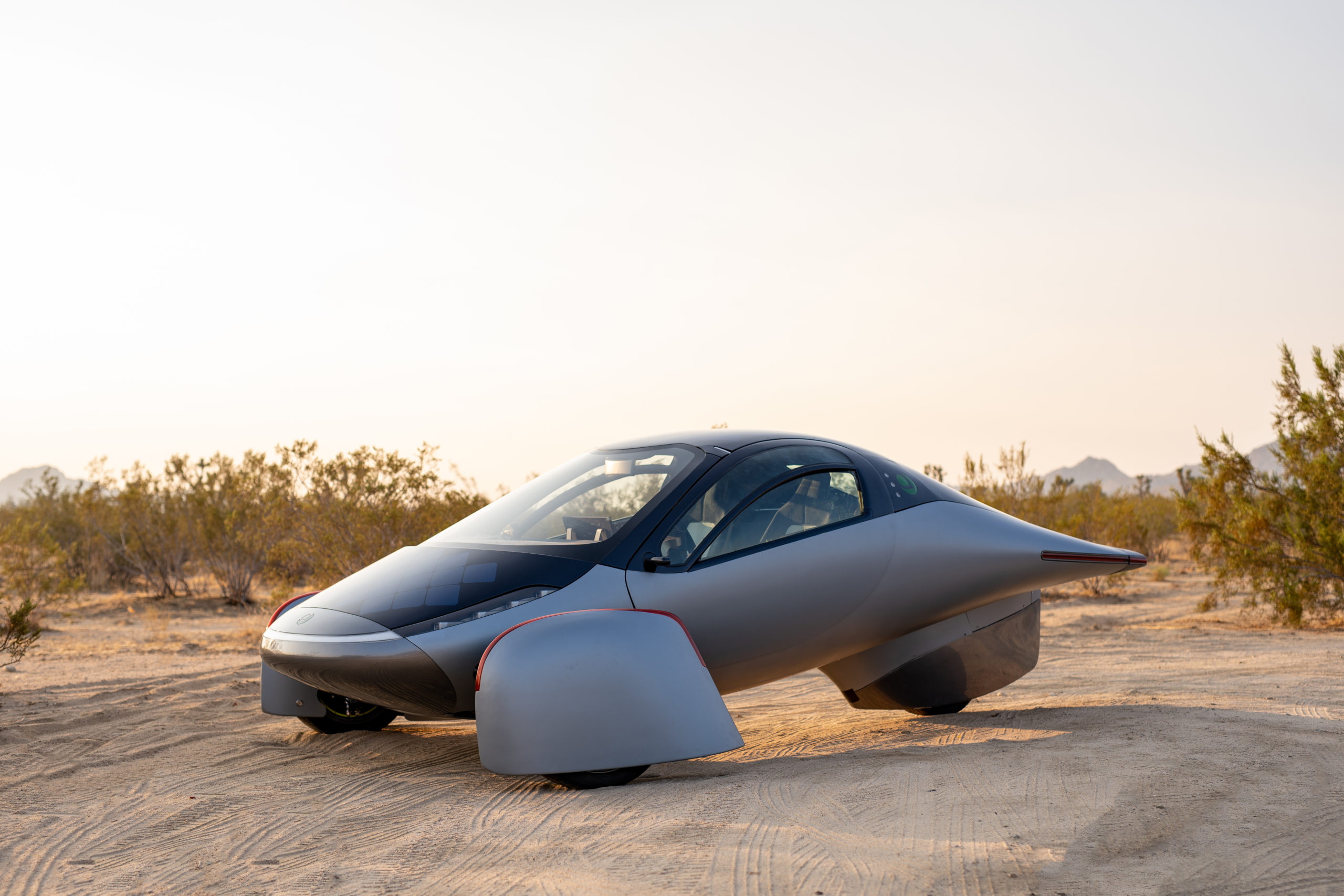I had the fantastic opportunity to talk with Aptera Co-Founder Chris Anthony on Friday. Our short half-hour conversation highlighted production timelines, vehicle design, sustainability, and more.
This weekend, Aptera is participating in the Fully Charged Show, an Electric Vehicle convention in San Diego, where they will be unveiling their Gamma vehicle. According to Co-CEO Chris Anthony, this vehicle is the last stop before attempting to enter production next year. And while the company has a long way before delivering orders, they have over 30,000 reservation holders eagerly awaiting the vehicle’s release.
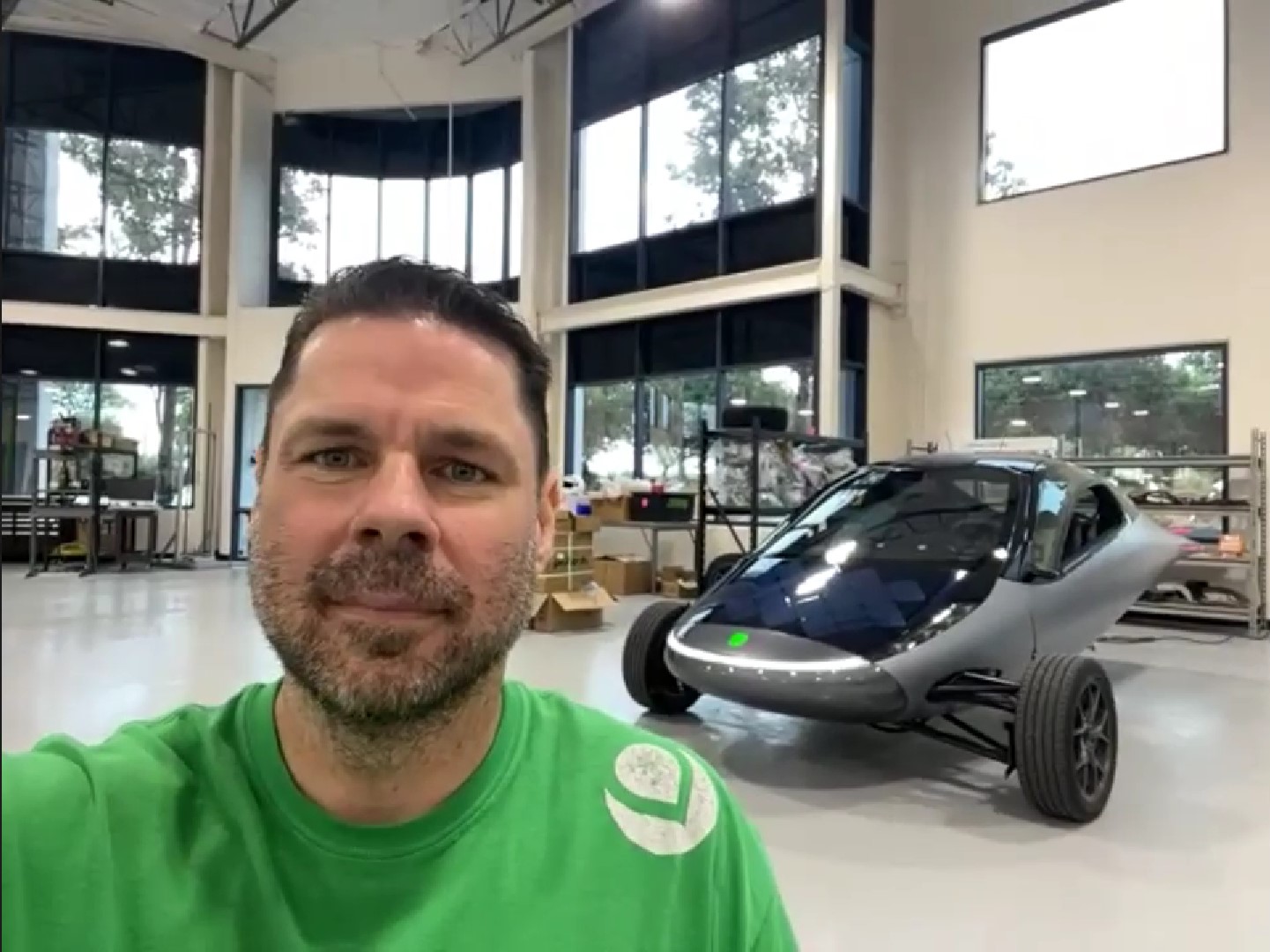
Design language –
The first question I had to ask Mr. Anthony about was the design language of Aptera’s first vehicle. Specifically, what is Aptera attempting to make consumers think and feel when they see the car for the first time?
The first thing that came to the CEO’s mind was capability; he wants consumers to feel like Aptera is just as capable as any other vehicle and can even do more with its unique energy generation capabilities. When he has had the opportunity to have people sit in the vehicle, testers have stated that the vehicle is comfortable, and Mr. Anthony hopes the vehicle’s driving dynamics only further improve the experience.
Capability as a “do everything” vehicle –
Besides the Aptera’s beautiful design, many are looking to buy the Aptera for its function. Coming out of COVID lockdowns, many consumers have been spending more time outside the house, hiking and mountain biking, meeting with friends and family, and taking trips to local events and scenic locations. How has Aptera engineered capability into their vehicle to perform these tasks?
Mr. Anthony points to the car’s solar power generation and the surprising amount of interior space as two critical features in helping people use their vehicles in everyday life. The car’s numerous solar cells mean the vehicle can go further and do more things, which is the ultimate goal of capability. At the same time, the vehicle’s interior is surprisingly spacious, with seven feet of space behind the front seats to the tail; enough room to camp in the vehicle, throw in their mountain bikes, or just travel with their dog.
Customization –
A key part of how many people interact with vehicles today is how they make them their own, customizing the look, feel, and capabilities of the vehicle to best suit their needs. Aptera is not only in support of this goal but is actively working with third-party suppliers to make that dream a reality.
The CEO clarified that Aptera would be more than willing to supply third-party accessory makers with everything from dimensions to CAD files to detailed systems information. He says, “We are happy to share information to help our users find [the vehicle] to be more useful.” As he would note later in the interview, this stems from a “right to repair mindset.”
Possible use of the Tesla Connector –
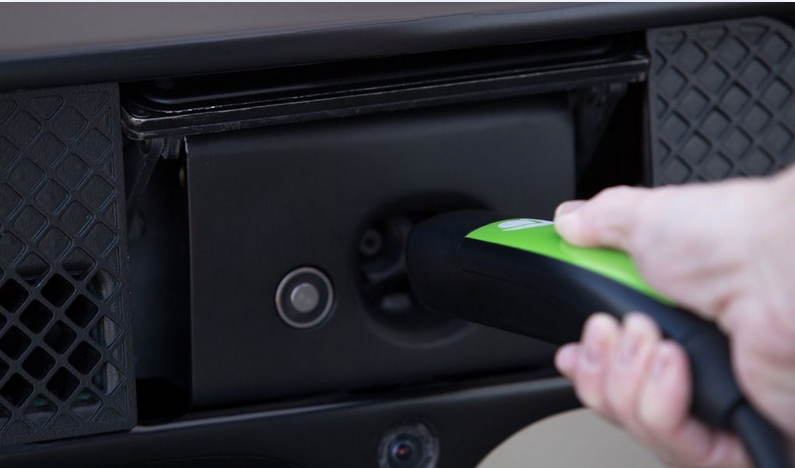
Aptera previously announced that they were not only attempting to include the Tesla connector on their vehicle but also attempting to make the connector the U.S. standard EV connector. However, it remains unclear if Aptera will include the connector in the vehicle, and doubtful that the Tesla Connector would become the US standard.
Nonetheless, Mr. Anthony stood behind the engineering of the Tesla connector. Foremost, he cited the connector’s ease of use and smaller size, which makes it far easier to maneuver than other connector types. But the connector also benefits from supporting the vast majority of electric vehicles in the U.S.
The CEO even went as far as saying that the U.S. should be spending more money supporting Tesla supercharger locations as long as the government plans to expand EV charging anyway.
Aptera’s future goals –
It is clear that Aptera will be focused on getting to production and delivering to their over 30,000 reservation holders in the immediate future. But if the company can achieve these goals, where does the CEO see the company’s next focus?
First, Mr. Anthony doesn’t see the company abandoning the two-door/two-seater form factor. He argues that the Aptera is an ideal complimentary car, helping you complete your daily commute and essential activities that don’t require a lot of space.
Perhaps more excitingly, the CEO did hint at the possibility of multiple variants of the Aptera, a commercial version or a version with more cargo capacity, for instance. No other details are known about these ideas yet.
Production timeline –
With the unveiling of Aptera’s Gamma vehicle this weekend, the company will now be shifting to getting to production as soon as next year. And while the CEO acknowledged that the timeline might not be as fast as some have wanted, he believes in doing the process correctly the first time and hopefully avoiding future issues.
“We have the good graces of our reservation holders to do it right…”
With Aptera’s current production facility in California, they aim to produce 20,000 units within the first year, meaning that filling the 30,000 reservations will take roughly a year and a half. However, any prediction outside of the company is pure conjecture.
Sustainability –
Consumers now more than ever are looking to get the best option for them and the best choice for the planet. Automakers recognize this, and many produce vehicles with sustainable interior parts, recycled metal components, and more. What does the pursuit of sustainability look like for Aptera?
The most sustainable material on Earth is the material not mined, was the conclusion of Mr. Anthony. While others may have been looking to use more sustainable materials, Aptera has pointed itself at using fewer materials in the first place. Aptera achieves this by producing a smaller vehicle, pursuing low curb weight, and reducing the number of interior components.
The pursuit of lightweight sustainability has trickle-down effects as well. Because of the vehicle’s low weight, it requires less energy to move and hence can use fewer batteries to achieve the same range, once again reducing weight (a positive feedback loop).
Ultimately, Mr. Anthony notes that fewer rare earth minerals are mined, and the vehicle as a whole becomes a more sustainable option for consumers. More specifically, Aptera uses 30% of the metal found in a typical vehicle, uses recycled composite materials for its exterior body panels, and uses recycled cloth and plastics on the interior.
The long-term goal is to have these vehicles on the road 50 years from now via upgraded parts along the way; better batteries, improved solar cells, replaceable interior pieces, etc.
Efficiency and beauty –
Manufacturers worldwide have been using aerodynamics to improve efficiency since the car’s inception. But perhaps most recently, due to the limitations of battery capacity, this pursuit has resulted in finding the most efficient shape possible, arguably at the cost of design. While vehicles like the Lucid Air and Mercedes EQS may have been beautiful in previous years, with the introduction of the Volkswagen ID Aero, it is clear that manufacturers are willing to trade unoriginality for efficiency.
Mr. Anthony doesn’t think that this has to be the case. In his response to this issue, he notes that Aptera proves that new and exciting designs can still be made in different form factors while still achieving maximal efficiency.
Are smaller vehicles the future? –
Aptera has highlighted the numerous benefits of producing smaller form factor vehicles. They can be more efficient, reduce manufacturing costs, be more aerodynamic, and be more sustainable. But are these motivators enough to get Americans to buy smaller vehicles in the future?
The CEO doesn’t believe so. Americans are obsessed with huge vehicles, evidenced by exceptionally high SUV and Truck sales. But perhaps, if anything, Aptera can show Americans what future transportation could look like, and if they are willing to give it a chance, maybe it will even change hearts and minds.
Aptera CEO Chris Anthony was incredibly gracious in giving Teslarati a piece of his busy schedule. If you want to learn more about the company’s vehicle, go to their website. And if you happen to be in the San Diego area, it’s worth the trip to the Fully Charged Show to check out the Aptera booth and the numerous other manufacturers attending the event.
William is not an Aptera ambassador, order holder, or investor.
What do you think of the article? Do you have any comments, questions, or concerns? Shoot me an email at william@teslarati.com. You can also reach me on Twitter @WilliamWritin. If you have news tips, email us at tips@teslarati.com!

News
Rivian unveils self-driving chip and autonomy plans to compete with Tesla
Rivian, a mainstay in the world of electric vehicle startups, said it plans to roll out an Autonomy+ subscription and one-time purchase program, priced at $49.99 per month and $2,500 up front, respectively, for access to its self-driving suite.
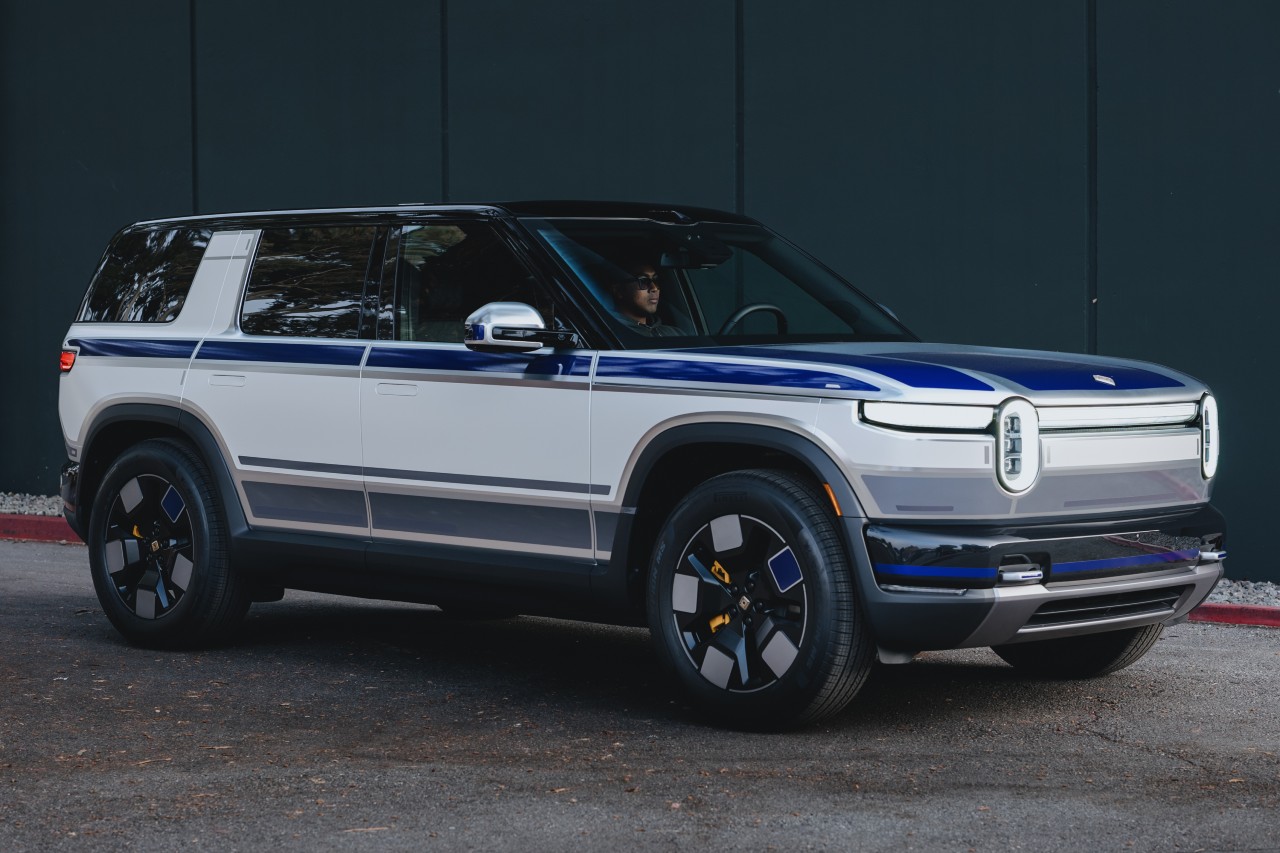
Rivian unveiled its self-driving chip and autonomy plans to compete with Tesla and others at its AI and Autonomy Day on Thursday in Palo Alto, California.
Rivian, a mainstay in the world of electric vehicle startups, said it plans to roll out an Autonomy+ subscription and one-time purchase program, priced at $49.99 per month and $2,500 up front, respectively, for access to its self-driving suite.
CEO RJ Scaringe said it will learn and become more confident and robust as more miles are driven and it gathers more data. This is what Tesla uses through a neural network, as it uses deep learning to improve with every mile traveled.
He said:
“I couldn’t be more excited for the work our teams are driving in autonomy and AI. Our updated hardware platform, which includes our in-house 1600 sparse TOPS inference chip, will enable us to achieve dramatic progress in self-driving to ultimately deliver on our goal of delivering L4. This represents an inflection point for the ownership experience – ultimately being able to give customers their time back when in the car.”
At first, Rivian plans to offer the service to personally-owned vehicles, and not operate as a ride-hailing service. However, ride-sharing is in the plans for the future, he said:
“While our initial focus will be on personally owned vehicles, which today represent a vast majority of the miles to the United States, this also enables us to pursue opportunities in the rideshare space.”
The Hardware
Rivian is not using a vision-only approach as Tesla does, and instead will rely on 11 cameras, five radar sensors, and a single LiDAR that will face forward.
It is also developing a chip in-house, which will be manufactured by TSMC, a supplier of Tesla’s as well. The chip will be known as RAP1 and will be about 50 times as powerful as the chip that is currently in Rivian vehicles. It will also do more than 800 trillion calculations every second.
Meet the Rivian Autonomy Processor.
Fast, smart, scalable and purpose-built for autonomous driving and the world of physical AI. Hitting the open road in 2026. pic.twitter.com/0wYXi5WKy7
— Rivian (@Rivian) December 11, 2025
RAP1 powers the Autonomy Compute Module 3, known as ACM3, which is Rivian’s third-generation autonomy computer.
ACM3 specs include:
- 1600 sparse INT8 TOPS (Trillion Operations Per Second).
- The processing power of 5 billion pixels per second.
- RAP1 features RivLink, a low-latency interconnect technology allowing chips to be connected to multiply processing power, making it inherently extensible.
- RAP1 is enabled by an in-house developed AI compiler and platform software
As far as LiDAR, Rivian plans to use it in forthcoming R2 cars to enable SAE Level 4 automated driving, which would allow people to sit in the back and, according to the agency’s ratings, “will not require you to take over driving.”
More Details
Rivian said it will also roll out advancements to the second-generation R1 vehicles in the near term with the addition of UHF, or Universal Hands-Free, which will be available on over 3.5 million miles of roadway in the U.S. and Canada.
More than any other feature, our owners have asked for more hands-free miles.
With Universal Hands-Free, you can now enjoy hands-free assisted driving on any road with clearly defined lanes. That’s roughly 3.5 million miles in the U.S. and Canada.
Look for it in our next… pic.twitter.com/ZFhwVzvt6b
— Rivian (@Rivian) December 11, 2025
Rivian will now join the competitive ranks with Tesla, Waymo, Zoox, and others, who are all in the race for autonomy.
News
Tesla partners with Lemonade for new insurance program
Tesla recently was offered “almost free” coverage for Full Self-Driving by Lemonade’s Shai Wininger, President and Co-founder, who said it would be “happy to explore insuring Tesla FSD miles for (almost) free.”

Tesla owners in California, Oregon, and Arizona can now use Lemonade Insurance, the firm that recently said it could cover Full Self-Driving miles for “almost free.”
Lemonade, which offered the new service through its app, has three distinct advantages, it says:
- Direct Connection for no telematics device needed
- Better customer service
- Smarter pricing
The company is known for offering unique, fee-based insurance rates through AI, and instead of keeping unclaimed premiums, it offers coverage through a flat free upfront. The leftover funds are donated to charities by its policyholders.
On Thursday, it announced that cars in three states would be able to be connected directly to the car through its smartphone app, enabling easier access to insurance factors through telematics:
Lemonade customers who own @Tesla vehicles in California, Oregon, and Arizona can now connect their cars directly to the Lemonade app! ⚡🚘
Direct connection = no telematics device needed 📵
Better customer experience 💃
Smarter pricing with Lemonade 🧠This is a game-changer… pic.twitter.com/jbabxZWT4t
— Lemonade (@Lemonade_Inc) December 11, 2025
Tesla recently was offered “almost free” coverage for Full Self-Driving by Lemonade’s Shai Wininger, President and Co-founder, who said it would be “happy to explore insuring Tesla FSD miles for (almost) free.”
The strategy would be one of the most unique, as it would provide Tesla drivers with stable, accurate, and consistent insurance rates, while also incentivizing owners to utilize Full Self-Driving for their travel miles.
Tesla Full Self-Driving gets an offer to be insured for ‘almost free’
This would make FSD more cost-effective for owners and contribute to the company’s data collection efforts.
Data also backs Tesla Full Self-Driving’s advantages as a safety net for drivers. Recent figures indicate it was nine times less likely to be in an accident compared to the national average, registering an accident every 6.36 million miles. The NHTSA says a crash occurs approximately every 702,000 miles.
Tesla also offers its own in-house insurance program, which is currently offered in twelve states so far. The company is attempting to enter more areas of the U.S., with recent filings indicating the company wants to enter Florida and offer insurance to drivers in that state.
News
Tesla Model Y gets hefty discounts and more in final sales push
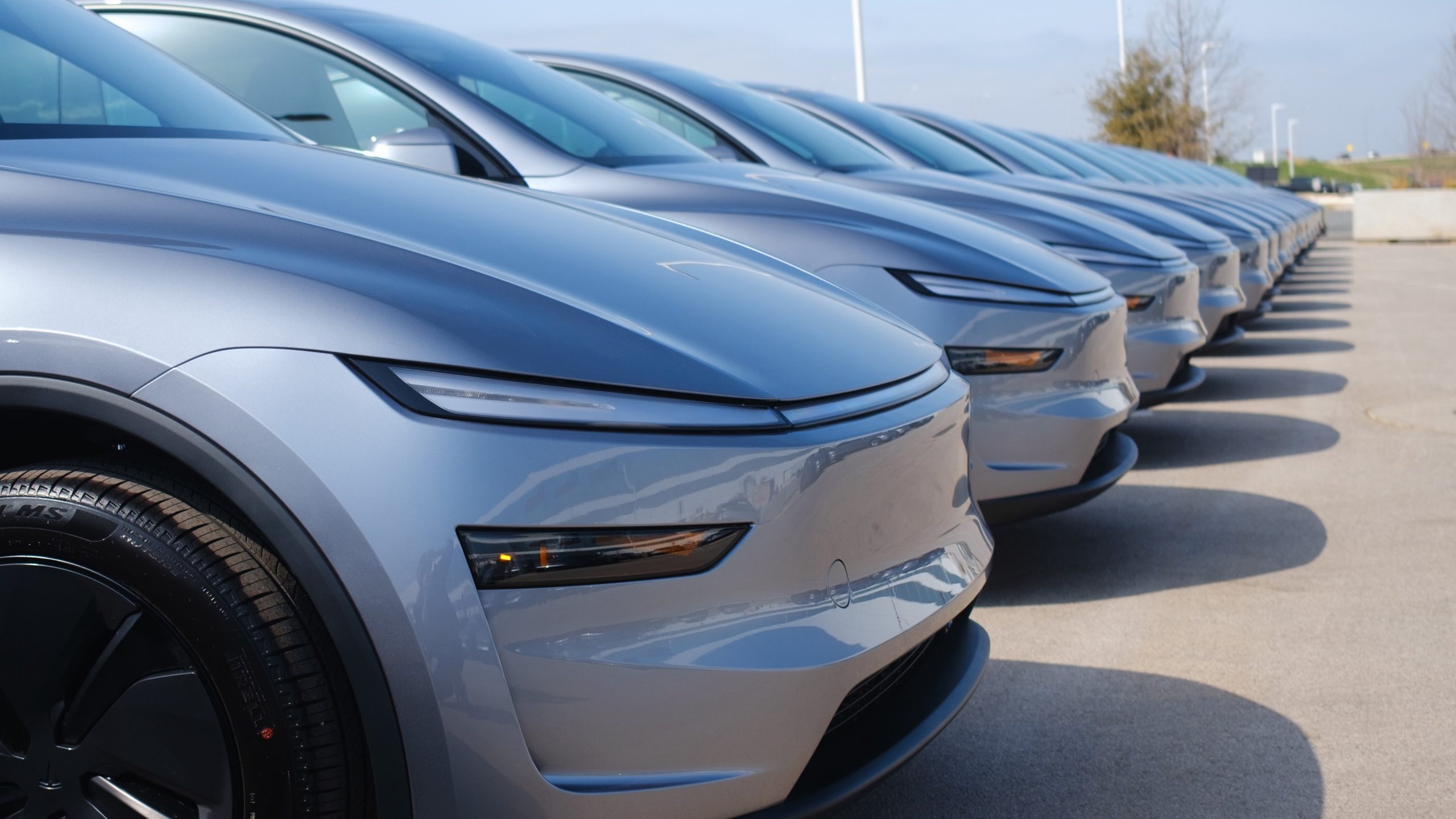
Tesla Model Y configurations are getting hefty discounts and more benefits as the company is in the phase of its final sales push for the year.
Tesla is offering up to $1,500 off new Model Y Standard trims that are available in inventory in the United States. Additionally, Tesla is giving up to $2,000 off the Premium trims of the Model Y. There is also one free upgrade included, such as a paint color or interior color, at no additional charge.
NEWS: Tesla is now offering discounts of up to $1,500 off new Model Y Standard vehicles in U.S. inventory. Discounts of up to $2,000 are also being offered on Model Y Premiums.
These discounts are in addition to the one free upgrade you get (such as Diamond Black paint) on… pic.twitter.com/L0RMtjmtK0
— Sawyer Merritt (@SawyerMerritt) December 10, 2025
Tesla is hoping to bolster a relatively strong performance through the first three quarters of the year, with over 1.2 million cars delivered through the first three quarters.
This is about four percent under what the company reported through the same time period last year, as it was about 75,000 vehicles ahead in 2024.
However, Q3 was the company’s best quarterly performance of all time, and it surged because of the loss of the $7,500 EV tax credit, which was eliminated in September. The imminent removal of the credit led to many buyers flocking to Tesla showrooms to take advantage of the discount, which led to a strong quarter for the company.
2024 was the first year in the 2020s when Tesla did not experience a year-over-year delivery growth, as it saw a 1 percent slide from 2023. The previous years saw huge growth, with the biggest coming from 2020 to 2021, when Tesla had an 87 percent delivery growth.
This year, it is expected to be a second consecutive slide, with a drop of potentially 8 percent, if it manages to deliver 1.65 million cars, which is where Grok projects the automaker to end up.
Tesla will likely return to its annual growth rate in the coming years, but the focus is becoming less about delivery figures and more about autonomy, a major contributor to the company’s valuation. As AI continues to become more refined, Tesla will apply these principles to its Full Self-Driving efforts, as well as the Optimus humanoid robot project.
Will Tesla thrive without the EV tax credit? Five reasons why they might
These discounts should help incentivize some buyers to pull the trigger on a vehicle before the year ends. It will also be interesting to see if the adjusted EV tax credit rules, which allowed deliveries to occur after the September 30 cutoff date, along with these discounts, will have a positive impact.
